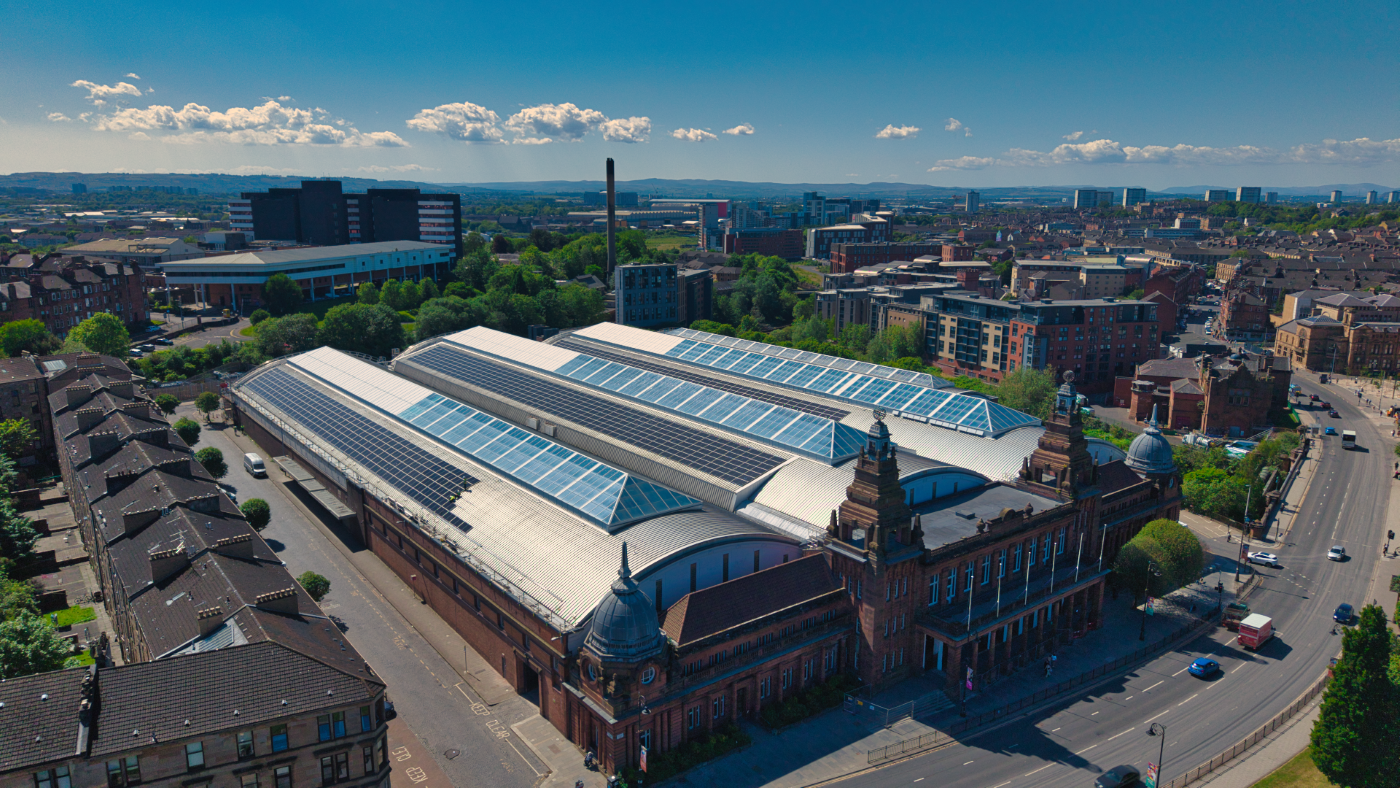The iconic Kelvin Hall in Glasgow has had more than 1,000 solar panels installed on its roof, as part of a Council-led project that has seen eight buildings in the city fitted with solar systems.
In addition to the Kelvin Hall scheme, Glasgow City Council have installed more than 700 solar panels at two day care centres and five primary schools.

The council anticipate that the solar panels, which have an expected life span in excess of 25 years, will have paid for themselves in around six to seven years.
The Kelvin Hall installation was a particularly ambitious project, given one of the reasons the building is category B listed is its large-span steel roof, designed to cover the vast interior spaces without internal supporting columns.
The £1.5m installation was overseen by Vital Energi who have a growing presence in Scotland’s renewable energy sector. It will supply around 20% of the building’s annual electricity needs, saving around £182,000 each year.
Vital Energi custom-designed the lifting equipment for safely transporting panels to the roof, and abseil-style systems to allow technicians to install panels on the sloped surfaces. These solutions were essential to overcoming the strict limitations inherent in retrofitting modern renewable technology to the culturally significant building, dating back to 1927.
The project has also included classroom presentations on climate action for local schools through Vital Energi’s Vital Education campaign. The company are also providing raised plant beds, soil and plants for community gardens at the daycare centres involved in the wider scheme.
The solar project was 50% funded by Scotland Recycling Fund, managed by Salix Finance, with Glasgow City Council providing the remaining investment.
Scott Lutton, Director at Vital Energi Scotland, said: ‘Working on Kelvin Hall’s protected Category B listed structure presented unique engineering challenges. Our team developed custom mounting solutions for the distinctive barrel-shaped roof while preserving the building’s historic character. This required specialised safety systems for installers working at height and strategic relocation of inverters to optimise system performance.
‘We considered more than just the technical aspects of the project—we actively engaged with the community to ensure the voices of those affected by potential disruptions were heard and respected.’
















Leave a Reply